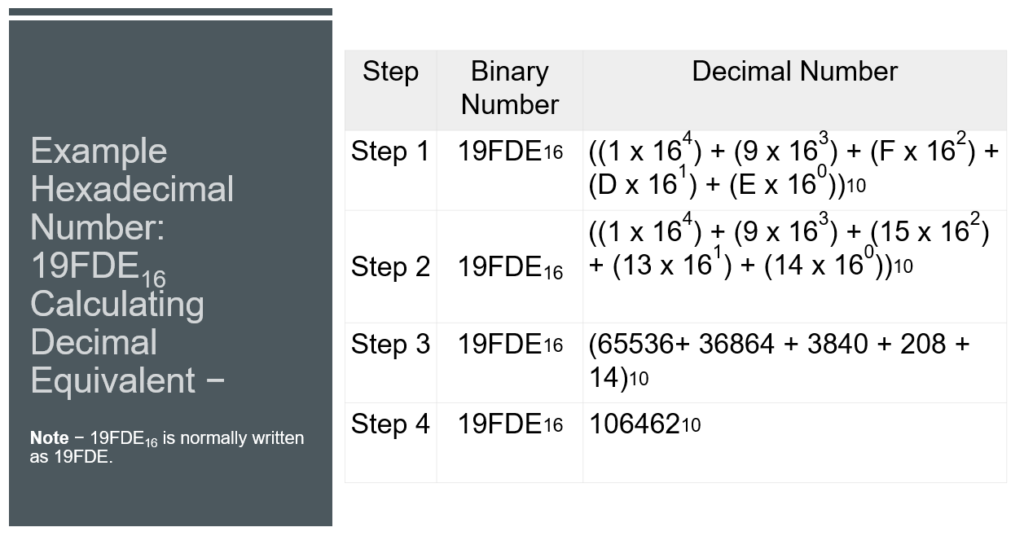- Hexadecimal Number System (Base 16):
- Digits Used: 0, 1, 2, 3, 4, 5, 6, 7, 8, 9, A, B, C, D, E, F
- Explanation: The hexadecimal system is widely used in computing, especially in programming and memory addressing. It is a compact way of representing binary data because one hexadecimal digit corresponds to four binary digits (e.g., the hexadecimal number 1A3 represents the binary number 0001 1010 0011).
- Use Case: Memory addresses, color codes in web design, and low-level programming.
Characteristics of hexadecimal number system are as follows −
- Uses 10 digits and 6 letters, 0, 1, 2, 3, 4, 5, 6, 7, 8, 9, A, B, C, D, E, F
- Letters represent the numbers starting from 10. A = 10. B = 11, C = 12, D = 13, E = 14, F = 15
- Also called as base 16 number system
- Each position in a hexadecimal number represents a 0 power of the base (16). Example, 160
- Last position in a hexadecimal number represents a x power of the base (16). Example 16x where x represents the last position – 1.

